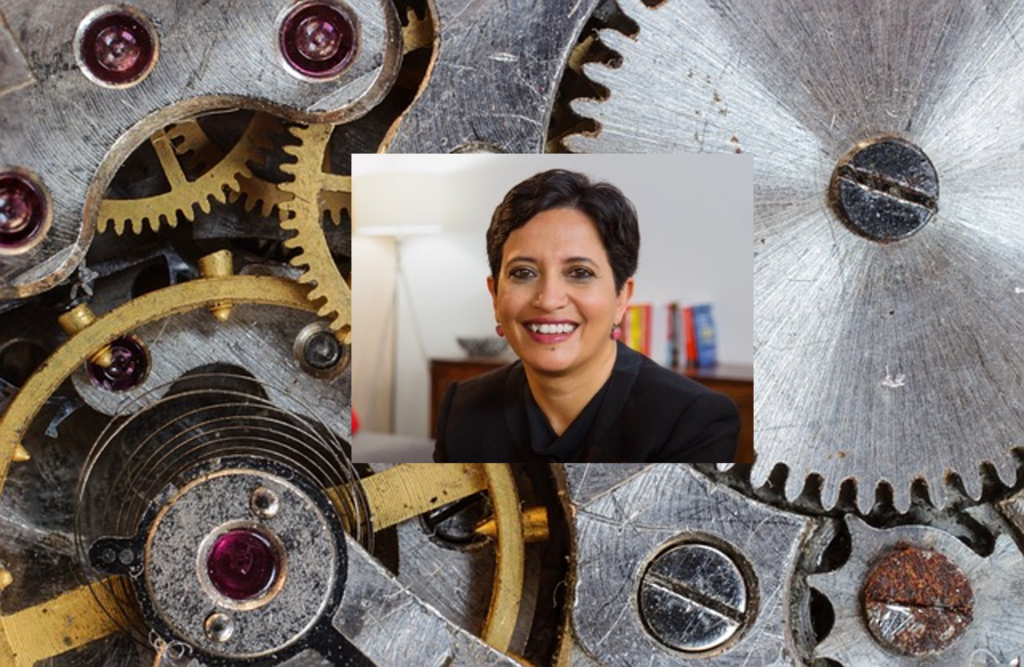Artificial Intelligence
1Mby1M Udemy Courses with Sramana Mitra: Domain Knowledge

At 1Mby1M, we believe in learning from case studies of successful entrepreneurs. These case studies involve discussions on opportunities and challenges specific to the domain such as Generative AI, E-Commerce, Digital Health, Cyber Security, and FinTech.
>>>Thought Leaders in Artificial Intelligence: Shan Haq, Vice President of Strategy and Business Development of Transcepta (Part 1)

The procure-to-pay space is going through huge technology adoption, and AI is making its mark on it as well. This interview explores the nuances of the sector.
Sramana Mitra: Let’s start by having you introduce yourself as well as Transcepta to our audience.
Shan Haq: I run Corporate Strategy and Development for Transcepta. My background is mostly in product management and marketing. I have previous experience with Microsoft, Deloitte, and Boeing. I started with Transcepta just a couple of months >>>
Featured Videos
Can 1M/1M Help Me Raise Money?
How Does 1M/1M Democratize Entrepreneurship Education?
How Does 1M/1M Democratize Management Consulting?
When Is The Right Time To Join 1M/1M?
Can 1M/1M Help Me With Business Development?
Can 1M/1M Help Me With Market Sizing?
Can 1M/1M Help Me Validate My Product?
Will I Have Private 1-on-1 Sessions In 1M/1M?
How Does 1M/1M Help Entrepreneurs Connect With Silicon Valley?
Mentoring or Consulting?
Why Does 1M/1M Charge $1000 a Year?
Why Does 1M/1M Partner With Local Organizations?
Why Don\’t Mentoring Networks Work?
Why Is It Important To Study With 1M/1M Now?
Dan Stewart Story
Vikrant Mathur Story
Man and Superman: Dealing with Singularity-Based Technology Acceleration

In the previous four segments of this series, we looked at what a singularity is and as part of evidence for the possibility of a technology singularity, we studied the frequency and impact of five scientific revolutions and cataloged the modern intersubjective realities (ISRs) that have co-evolved with the ever faster scientific revolutions and pushed to see how these have historically interacted and why things may be breaking down today.
In the concluding installment of this essay, we will look at how each of us experiences this personally and how our most important social structures are under duress today in ways that never happened in the past.
Thought Leaders in Artificial Intelligence: Gurjeet Singh, Co-Founder and Chairman of Ayasdi (Part 1)

This is a very interesting conversation about technology from Stanford being commercialized in financial services and healthcare, addressing very specific use cases in risk and other domains.
Sramana Mitra: Let’s start by introducing our audience to yourself as well as to Ayasdi.
Gurjeet Singh: I’m one of the co-founders and Chairman of the Board at Ayasi. I’m a mathematician and a computer scientist. I grew up in Delhi, India. I ended up working at Texas Instruments as a chip designer for about a year. I made my way to the US >>>
Man and Superman: Intersubjective Realities

By Guest Author Frank H. Levinson
In the previous three segments of this series, we looked at what a singularity is and as part of evidence for the possibility of a technology singularity, we studied the frequency and impact of five scientific revolutions. Let us now catalog the modern intersubjective realities (ISRs) that have co-evolved with the ever faster scientific revolutions and push to see how these have historically interacted and why things may be breaking down today.
Let’s now list key social structures that humans have evolved over time. Remember that all of these are really just different ISRs; thus, they are things we agree to treat as real. In other words, their reality derives only from our agreement. For instance, a $20 bill has very little intrinsic value, it is our nearly world-wide ISR agreement that gives it value. >>>
Thought Leaders in Artificial Intelligence: Josh Sullivan, SVP and Angela Zutavern, VP of Data Sciences at Booz Allen Hamilton (Part 1)

Josh and Angela have written a book called The Mathematical Corporation, based on their exposure to various customer use cases of Machine Intelligence at Booz Allen. They discuss a few here.
Sramana Mitra: You can decide who goes first. Please introduce yourselves as well as frame this conversation in the context of Booz Allen as well as your book.
Josh Sullivan: Ladies first, of course. >>>
Man and Superman: Impact of the Science Revolutions

By Guest Author Frank H. Levinson
In the previous two segments, we looked at what a Singularity was and as part of evidence for the possibility of a technology singularity, we studied the frequency of five scientific revolutions. Let us now analyze the impact of these revolutions.
It is perhaps hard for us to realize that the impact of each of these last five revolutions, measured by their pervasive effects which underpin modern life, is as important as the domestication of agriculture or creation of geometry millennia ago. But the modern ones have a much greater social impact because they arise, become widely available and approach near ubiquitous use in vastly shorter adoption times. >>>
Man and Superman: Modern Science Revolutions

By Guest Author Frank H. Levinson
In the first segment of this series, we saw what a singularity was and were looking at the evidence for the possibility of a technology singularity. So, let’s now fill in the revolutionary landscape (remember that the agricultural revolution which started about 10,000 BCE was the first one!).
The next major scientific revolution was led by Greek science and Roman engineering when systematic structure (e.g., modern mathematics was born) and methodology in terms of engineering occurred. We see this reflected in such diverse fields as geometry, >>>
Man and Superman: Life Near An Approaching Technology Singularity

By Guest Author Frank H. Levinson
Ray Kurzweil began writing more than 25 years ago about the possibility of a technology singularity occurring sometime in the late 20th century. He defines “Singularity” as “a future period during which the pace of technological change will be so rapid, its impact so deep, that human life will be irreversibly transformed.” >>>
Thought Leaders in Artificial Intelligence: Mike Flannagan, SVP of Analytics, SAP (Part 1)

This is a superb conversation about the trends and directions in which AI is evolving, especially in business applications.
Sramana Mitra: Let’s start by introducing our audience to SAP’s artificial intelligence activities. What trends are you seeing? What trends are you leading?
Mike Flannagan: The most significant thing that we’re seeing is that people don’t expect to interact with artificial intelligence, machine learning, advanced analytics as a side card to their core business processes. When we think about how to apply machine learning, we’re thinking about how to apply it in the context of existing workflows and how to enrich business processes >>>
Thought Leaders in Artificial Intelligence: Diaz Nesamoney, Founder and CEO of Jivox (Part 1)

Diaz is a 3x serial entrepreneur. He was a co-founder of Informatica with Gaurav Dhillon. In Jivox, Diaz is working personalization into digital advertising using AI techniques including Machine Learning. A great discussion about the future of digital advertising.
Sramana Mitra: Let’s start by introducing our audience to yourself as well as to the company.
Diaz Nesamoney: I’m the Founder and CEO of Jivox. I’m a serial entrepreneur. This is my third company. I tell >>>
